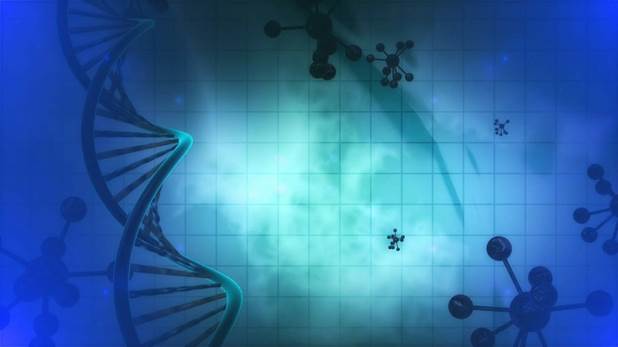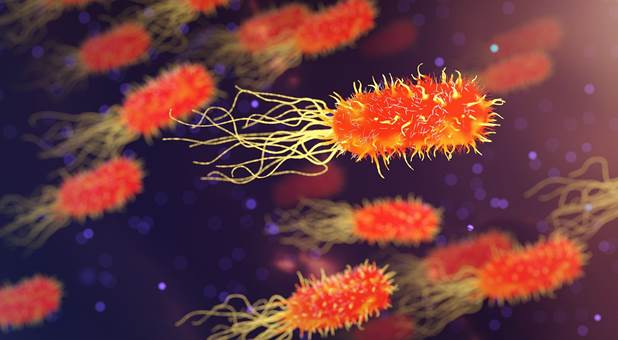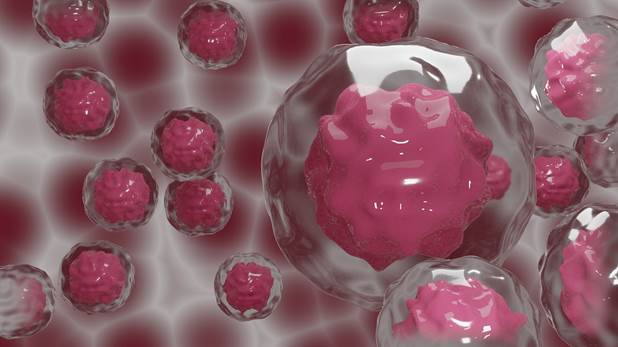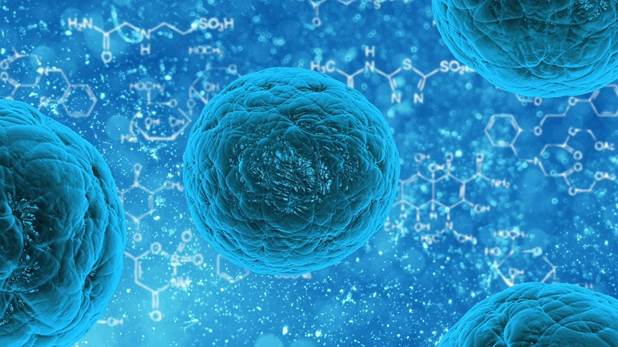Recent Advances In Monoclonal Antibody Production
Dec 7th 2022
The biopharmaceutical industry is putting much effort into developing fast, reliable ways to make monoclonal antibodies with high yields. Titers have gone above the 5 g/l mark because of progress in mammalian cell culture. Platform-based ways of developing downstream processes are now well known.
They keep improving as more and more products are used with these platforms. Because cell culture has become more productive, bioprocess development focuses on steps after the production bioreactor. This has made people want to use separation methods other than chromatography again. This article discusses the current industrial antibody production methods, with emphasis on downstream technologies, for custom antibodies and products related to antibodies, such as:
The post also talks about how things might change in the future.
What Are Monoclonal Antibodies?

Monoclonal antibodies are a group of antibodies made by a single B cell clone. Monoclonal antibodies are large molecules with many parts. Due to how hard it is to make these kinds of therapies, it can be hard to produce monoclonal antibodies quickly and in large quantities, especially compared to other types of therapies like pills or vaccines. The global COVID-19 outbreak made these manufacturing constraints even more apparent. Hence, necessitating the rapid advancement in custom monoclonal antibody production and recombinant protein production, among others.
The Traditional Monoclonal Antibody Production?
The conventional method of monoclonal antibody production protocol (mAbs) often begins with the formation of mAb-producing cells (also known as hybridomas), which is accomplished by fusing myeloma cells with splenocytes that produce the desired antibody (e.g., B cells). These B cells originate almost exclusively from animal sources, more specifically mice. Following the fusion of two cells, many clones are screened and selected according to each clone's immunoglobulin class and antigen specificity.
Each "hit," or promising candidate hybridoma cell line, is verified, validated, and characterized using additional tests. Once finished, the clones are scaled up to allow for more downstream bioprocesses.
A Standard Method for Making Monoclonal Antibodies

The typical steps in monoclonal antibody production include the following:
- Immunization of mice and isolation of splenocytes: Mice are first given an antigen to be immunized against. Their blood is then tested to see if any antibodies have been produced. The splenocytes that make antibodies are then taken out and used to make hybridomas in the lab.
- Myeloma cell preparation: Myeloma cells are immortalized cells that, combined with spleen cells, can become hybridomas, which have an endless capacity for development. Myeloma cells are getting ready to join together.
- Fusion: Polyethylene glycol (PEG) facilitates the fusion of myeloma cells and isolated splenocytes, leading to the formation of hybridomas.
- Screening and selection of clones: Clones are analyzed for their antigen specificity and immunoglobulin class before being screened and picked for further study.
- Functional characterization: Verify, validate, and describe (using ELISA kit tests, for example) each colony that may be highly productive.
- Scale up and wean: Grow the number of clones that yield the desired antibodies and stop using the selection agent(s).
- Expansion: This entails increasing the number of clones that produce the required antibodies (e.g., bioreactors or large flasks).
The use of monoclonal antibodies in targeted therapeutics has tremendously influenced the treatment of various diseases, and biosimilars have made these treatments more widely available. Consequently, the rest of this blog will review and determine the progression of technologies used in small and large-scale production of monoclonal antibodies for therapeutic and commercial purposes.
Innovations in mABs Expression Procedures
Since its introduction in 1977, hybridoma immortalization has been employed to produce and identify mAb. Over the years, the mAb technology first developed in rodents has been swiftly and effectively applied to advancing human diagnostics and therapies.
Hybridoma Technology

Therapeutic monoclonal antibodies have been created using the mouse hybridoma technique. This method takes advantage of the natural functions of myeloma and B lymphocytes to make hybridoma cells of immortal nature that make mAbs that are selective for the target antigen. Polyethylene glycol (PEG), which acts as a glue, is used to join the B-cells to the myeloma cells. The antibodies made using this method are versatile therapeutic agents with a nature that is particular to the antigen under consideration.
However, mice frequently have inadequate immune systems, which leads to mAbs with low affinity or no specificity. Other species apart from rodents are generally not used to make mAb because it is hard to set up immortalized cell lines that make antibodies using hybridoma.
Phage Display
To expose the exterior peptides of the lysogenic bacteriophages, G. Smith invented phage display technology in 1985. To date, this approach has emerged as a top technique for producing numerous proteins, peptides, and antibodies based on the physical coupling of the phage genotype (single-stranded DNA of the associated virion) and phenotype (expression of the phage coat fusion protein).
This method makes it possible to make libraries of phage display with up to 1010 different types of phage, to test the affinity of protein-ligand relations, to characterize, to recognize epitopes, to choose enzyme substrates, to screen antibody repertoires, and to encourage the formation of analogous phage particles from an E. coli clone.
Amplification of Single B Cell
An alternative method for the generation of mAbs from immunized animals is the direct cloning of heavy antibody chain (IgH) variable (VH), light chain lambda variable (VL), and kappa variable (VL) with light chain components from single plasmablast cells/antigen with targeted plasma ( ASPCs) through the aid of polymerase chain reaction (PCR).
There are also some problems, like isolating ASPCs costs money and requires technical skills. Limiting procedures include amplifying the cell's VL and VH genes and assembling immunoglobulin light (IgL and IgH) and heavy chains. Using single cells as templates, a high-output cloning method was used for the fast and expandable production of mAbs from a single cell. This was accomplished by creating a contactless magnetic power transmission apparatus (MAGrahd) for automatically generating cDNA from homopolymer tailing, mono-cellular genes, and target-selective joint PCR for IgL and IgH genes.
Innovation in Monoclonal Antibody Engineering
Affinity Maturation
Engineering for Affinity Maturation Abs has been researched extensively to improve their ability to bind to antigens, and this is likely one of the most studied areas ( Chowdhury & Wu, 2005). One way to do this is to make vast libraries of CDRs or the entire variable domains that have been randomly changed and then choose variants with higher affinity from this large group of mutants. Ab libraries with mutations within the variable regions are generated via three methods:
- Random CDR mutagenesis
- Chain shuffling
- Error-prone PCR and DNA shuffling
Focused mutagenesis is another way to make small libraries, which increases the chance of finding variants with higher affinity. (1) Targeted mutagenesis: in this method, 20 different amino acids are substituted randomly into each of the 6 CDRs. (2) Hotspot mutagenesis: In this method, hotspots are chosen based on how they relate to the structure and function of the Ab. Then, small libraries of about 400 clones are made, and higher-affinity variants are chosen (Ho et al., 2005).
Recent research has uncovered the role of activation-induced cytidine deaminase (AID) enzymes in somatic hypermutation and class switch recombination in Ig V-domains (Muramatsu et al., 1999). There is evidence that this enzyme promotes the somatic hypermutation of transfected genes in hybridomas and fibroblasts. Therefore, AID has the potential to be utilized in upcoming research to produce modified antibodies with a greater affinity and specificity.
Enhancements in the Effector Function of Monoclonal Antibodies
The effectiveness of mAbs as medicines depends on their ability to turn on effector activity and to bind to antigens (Chowdhury & Wu, 2005). These activation activities include both complement-dependent cytotoxicity and ab-dependent cellular cytotoxicity (abbreviated as ADCC) (CDC). Antigen-antibody complex mediated cytotoxicity (ADCC) involves the binding of an antigen-antibody complex to the Fc receptor (FCR) and the subsequent activation of nearby effector cells, like macrophages and natural killer (NK) cells, to lyse or opsonize the target cell.
The antigen-antibody complex in CDC activates the complement system, resulting in the lysis or opsonization of target cells. It makes sense that glycoengineering or protein engineering could be used to improve the way antibodies bind to FcR or the complement factors, which could improve how well they work as medicines.
To further enhance effector function, mAbs can be modified to incorporate additional effector capabilities. For example, cytotoxic medicines or radio-labeling are fused to mAb components for cancer therapy. In contrast, enzymes are utilized in prodrug therapy, and cytokines are employed to stimulate an antitumor immune response. In addition, novel mini-antibodies like the diabody (an scFv-based antibody dimer), triabody (an scFv-based antibody trimer), tetra body (an scFv-based antibody tetramer), and sc-diabody (an scFv-based antibody tetramer) were developed to facilitate the effector functions of therapeutic mAbs by bringing them close to the impact.
Advances in Cancer Treatment Through mAbs
When hybridoma technology came along, it changed clinical research, biotechnology, cell biology, and immunology in a big way. Prior to its introduction, antibodies were made by repeatedly immunizing animals with the target antigen. The sera from the animals were then used to treat people. Allergic reactions were common, and giving the patients crude sera did not help them. As a result of the use of immortal myeloma cells and mice splenocytes, the hybridoma method was used to make many mAbs against the target antigens.

Until now, mAbs have been used extensively for diagnosing and treating cancer. Nevertheless, giving cancer patients mouse monoclonal antibodies (mAbs) makes them get HAMA, clear out quickly, and become very immune. To get around these problems, contemporary biotech advances in genetic engineering have helped reduce immunogenicity, make it easier to make antibody-drug conjugates, and make minimized antibody segments that can be used to look for cancer.
Recent progress, such as the use of:
- Partially and fully humanized Bispecific antibodies helped extend the half-life of mAbs and make them more useful as medicines.
- The transgenic mouse antibody has two similar light and heavy chains (CL, CH), variable domains (VL, VH), and antigen-binding sites (CDRs) in the changeable domains (VL, VH). The immunogenicity of an antibody is caused by its unchanging region (Fc), which is connected by disulfide bonds (-S-S-).
Chimeric monoclonal antibodies are made by replacing the constant IgG section of a mouse antibody with that of an antibody from a human.
A humanized antibody is made by fusing DNA from 3 CDRs of the mouse variable part into the human IgG layout. It has more than 90% human sequences. The phage display method or transgenic mice with human Ig make fully humanized antibodies. It was made of only humans, so it was less likely to cause an immune response compared to the mouse versions, which were humanized or chimeric.
Bispecific antibodies have two antigen-binding domains and bind to two antigens, one after the other. Shorter pieces of antibodies have been made, like divalent scFv and monovalent scFv, which bind to antigens in a way that is specific to each antibody.
The FDA in the US and the authorities of health in the EU have patented many mAbs for therapeutic use. These antibodies treat deadly diseases like human cancers, inflammatory responses, autoimmunity, organ transplant rejection, and hematological malignancies. Also, multiple other mAbs for treatments are in different stages of clinical testing to treat deadly diseases like the Zika virus, Ebola, and HIV/AIDS.
Conclusion
Since the 1960s, there have been a lot of changes and improvements in custom antibody services and protein production services around the world. Using powerful methods like B-cell amplification, phage display, and hybridoma technology with the assistance of PCR, scientists have made a wide range of antibodies and their pieces with different structures. The monoclonal antibodies are crucial because they are specific and vital to the immune system's response to antigens of interest.
They can be used in the medical field, biotechnology, cell biology, immunology, and biochemistry, among others. Further research will help us understand how far mAbs development can go and discover new rooms of progress for the future. Do you have any questions about the large or small-scale production of monoclonal antibodies for various purposes? Do not hesitate to contact us.

